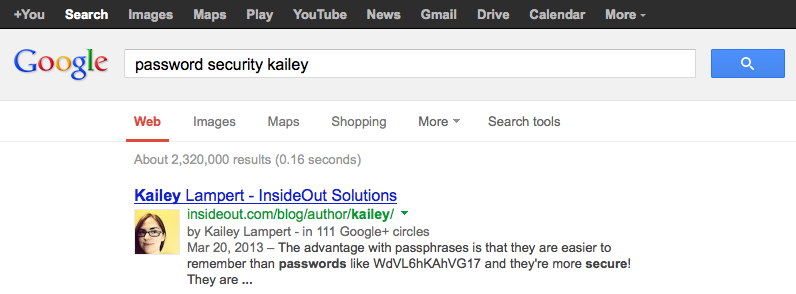
Is the dust gathering on your blog as fast as (or faster than) it is on your desktop computer? Step away from the phone and dust off both your computer and blog to improve your inbound marketing efforts.
I receive a handful of customer calls per month that deal with the social media marketing on Facebook, Twitter, Google+ et al. While the customer outlines their questions, I go to their website to see if they have been blogging. If they haven’t posted in more than a couple of weeks (typically it will be two or more months) I tell them I will be happy to help them, then ask them why they are neglecting the most important tool in their internet marketing box: their blog.
There is a small, but vocal group in the internet marketing industry that have been pronouncing blogging dead since the mid-2000s. They picked up the chorus from their counterparts in journalism and related industries.
Here we are, almost 10 years after the first pronouncements of death for blogging and they remain a critical component to successful internet marketing for many.
The “Blogging Is Dead” Myth
Regardless of their focus, denouncers of inbound marketing via a blog all cite the rise of social media, the growth of mobile device internet use, and various other factors as the causes of blogging’s demise. What they fail to note is that, despite all of these changes, blogging is still the best way for many businesses to generate fresh, quality content for their websites – a critical factor for website visibility in organic search.
Many champions of the idea that blogs have long passed their usefulness in internet marketing will cite sources such as:
- Inc. magazine’s April 2012 article “Where Have All the Bloggers Gone?“
- The New York Times’ February 2011 article “Blogs Wane as the Young Drift to Sites Like Twitter“
Ironic, isn’t it, that blogging naysayers will write a blog post to quote or link to a (relatively “old”) blog post or article to announce the end of blogging as an effective internet marketing tool!
The destination & travel industry also has its share of “blogging is dead” supporters and their citations are just as suspect. For example, a May, 2013 by Technorati article entitled “Is Social Media Killing Destination Travel” cited 3:AM Magazine’s August, 2007(!!!) “The Death of Travel Writing” article.
The “Blogging Is Changing” Reality

This boss may be rude and out of touch with today’s trends toward trendy social media outlets, but the question remains a valid one if you want to keep your website visible for targeted keywords in organic search.
While it’s untrue to say that blogging is dead and a waste of effort, it is very true to say that blogging, as with everything in internet marketing, is constantly evolving. Since 2007, blogs have shifted from simply general interest readership to an active component of inbound marketing.
HubSpot’s 2013 State of Inbound Marketing Report includes a survey of 3,339 marketers that shows 62% use a blog in their inbound marketing efforts. Social Media Examiner’s 2013 Social Media Marketing Industry Report, which also surveyed over 3,000 marketers, shows that blogging remains the #1 social media outlet that marketers want to learn and master, beating out even the increasingly hot Google+.
It may be true that blogging may not be a feasible online marketing platform for some businesses in some markets due to the high level of competition for organic search visibility and/or the shift to social media outlets of their target markets, but it certainly is not true for the clients we serve in the B&B inn, boutique lodging, dude ranch, tourism and related industries.
In fact, these smaller, niche businesses and organizations have a growing opportunity to get their content out to search engine users when they put in the necessary discipline and follow best practices in their efforts. Client who do so typically see dramatic gains in organic search visibility and traffic.
How to Use Your Blog Effectively in Your Internet Marketing Efforts
Consider your website’s blog “the tip of the spear” when it come to your internet marketing. Become an efffective blogger before tackling more specialized social media, e-mail marketing and other inbound marketing outlets.
Follow these guidelines to maximize the inbound marketing effectiveness of your blogging:
![]() 1. Before You Begin, Make Sure Your Google+ Page & Profile Are Listed as Publisher & Author: The primary purpose of blogging is to increase your organic search visibility. Google owns 2/3 of the search market, so it’s crucial that you jump through their hoops:
1. Before You Begin, Make Sure Your Google+ Page & Profile Are Listed as Publisher & Author: The primary purpose of blogging is to increase your organic search visibility. Google owns 2/3 of the search market, so it’s crucial that you jump through their hoops:
- List your Google+ business page as publisher of the website
- List your Google+ personal profile as author for website content
Doing so ensures that Google will recognize that you and your business’ Google accounts are tied directly to your website. As organic search evolves to include an authorship verification and trust components it will become increasingly vital that this step is done.

Enjoy the potential benefit of increased search engine visibility and authority with Google+ authorship.

Yes, people do still read stuff longer than a Twitter post, including great content posted to blogs.
2. Publish Posts Regularly: Consistently posting to the blog on your website provides more content for search engines to index and increases reader interest and encourages subscription because they know you are dedicated to keeping your blog up to date.
3. Post Great Content for Readers: If your content is found, it needs to be worthwhile to the reader or you won’t gain any benefit. This is the basic rule of inbound marketing. Don’t worry, you have what it takes to create and market great blog content. When you post great content you will be more likely to receive comments. This interaction with readers is the social media component within you blog. Proper comment moderation will ensure that the post continues to add quality content to the post as time goes on.
4. Optimize Post Content for Search: It won’t benefit you to spend the time publishing posts that aren’t search optimized. All you have to do is follow a few steps to optimize blog posts for search engines.

Earn your readership and you can watch your subscriptions growth in Google Analytics.
5. Have a Conversion Goal in Mind: While gaining more visits and new visitors to your website via your blog is certainly a primary goal, you should, whenever appropriate, add a track-able conversion goal in the post such as:
- Comment on the post (remember, a blog post has a social media component)
- Subscribe to your e-newsletter or blog
- Click-thru to other targeted content on your website
- Download a document attached to the blog post
- Watch an embedded video (hopefully your own new video produced as part of your video marketing plan)
- Make a purchase
There are lots of way to encourage the goal action, from simply requesting it to requiring a subscription, sign-up, social media response, etc. in order to receive more information.
These kinds of reader actions can be set up to be logged with Event, Goal and Ecommerce tracking in Google Analytics so you can know just how successful your conversion rate was for the post.
6. Post Links to the Blog Post in Appropriate Social Media Outlets: Once your blog post publishes, be sure to promote it via your business’ social media pages and profiles on Facebook, Google+, Twitter, et al. Write a custom lead-in for the link to entice response (like, comment, re-tweet, etc.). Not all blog posts will be of interest to your fans and followers and the posting of links to your blog should only be one component of your overall social media marketing efforts.
Need Help with Your Blog and Related Inbound Marketing?
Blog Writing: If you are a client who simply doesn’t have the time to work on inbound marketing with your blog or would like assistance while you refocus on improving your blog, InsideOut Solutions offers blog writing services that start at $80 per month for 2 posts per month. With our blog writing services, you work with the writer to identify target topics and markets.
Google+ Publisher & Author: Having trouble linking your Google+ page as website publisher or your Google+ profile as author of your website blog? This service is available to clients for as little as $20 and is included at no additional charge with many plans.
Not a Client of InsideOut Solutions? Contact us to discover the advantage of our hosting and internet marketing services.

